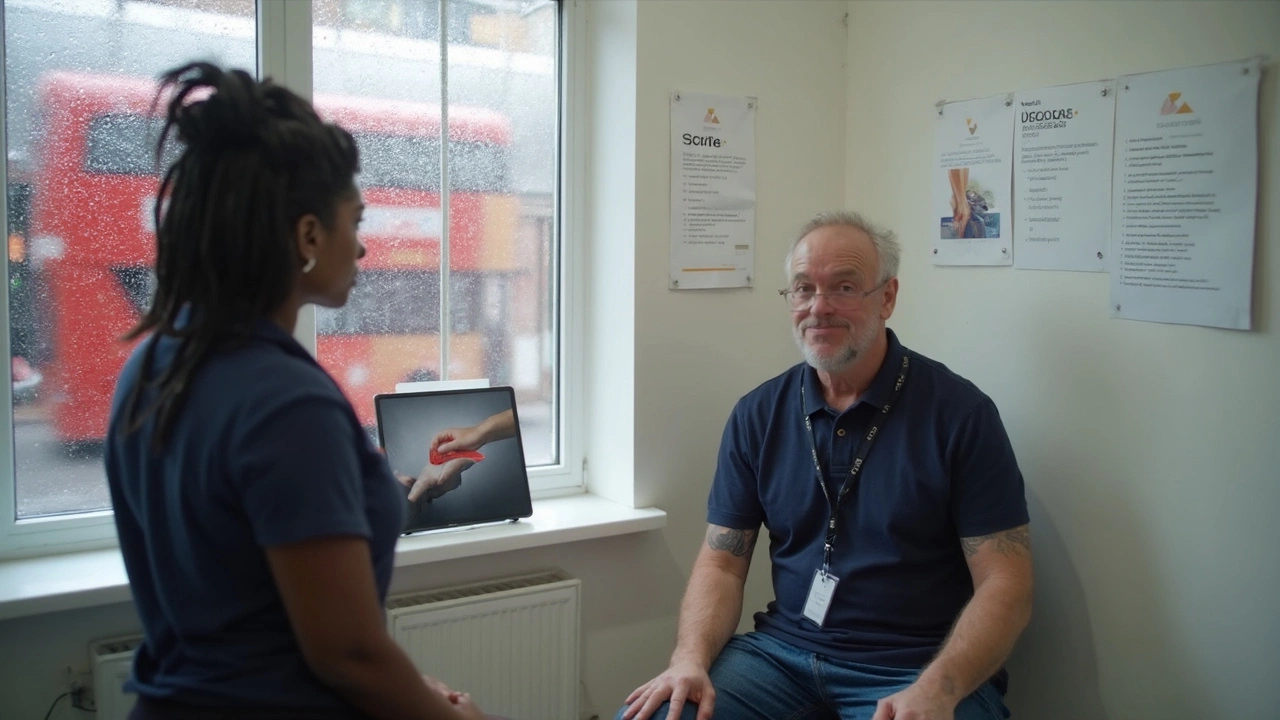Trigger Points: Your Quick Guide to Finding and Relieving Muscle Knots
Ever felt a tight spot in your shoulder that hurts when you press it? That’s a trigger point – a tiny knot that can send pain radiating to other parts of your body. They form when muscle fibers tighten up, often from stress, over‑use, or sitting wrong for too long. The good news? You don’t need a pricey clinic to get relief. With a few practical moves, you can melt those knots and feel looser in minutes.
What are trigger points and why do they hurt?
Trigger points are basically “micro‑spasms” inside a muscle. When a fiber contracts and stays stuck, it cuts off its own blood flow. The lack of oxygen makes the area sore, and the pain can travel along nerves to places like the neck, arm, or even the head. That’s why a knot in your upper back might give you a headache. The pain often feels sharp, achy, or like a dull throb, and it gets worse when you move the affected muscle.
These knots love to hide in common problem spots: the neck, upper back, lower back, and hips. If you notice a tender nodule that jumps when you press it, you’ve probably found a trigger point. Because they’re tiny, they’re easy to miss, but once you know what to look for, spotting them becomes second nature.
Massage moves that target trigger points
The fastest way to release a knot is direct pressure. Use your thumb, fingers, or a small massage ball and press firmly on the spot for 10‑15 seconds. You’ll feel a slight wince at first, then a gradual easing as the muscle fibers relax. Keep the pressure steady – don’t bounce – and breathe deeply to help the body let go.
After the initial press, switch to gentle strokes that move away from the knot. This “cross‑fibre” technique helps flush fresh blood into the area, clearing out waste products that built up while the knot was active. A simple pattern is to stroke from the knot toward the nearest joint, like moving from a tight shoulder knot down the arm toward the elbow.
If you prefer a softer approach, work the surrounding muscles first. Warm up the area with light effleurage (long, gliding strokes) for a minute, then zero in on the knot. The surrounding muscles become more pliable, making it easier to press into the trigger point without hurting yourself.
For deeper work, you can use a tennis ball against a wall. Stand with the ball behind the painful spot, lean into it, and hold the pressure while you shift your weight slightly. This lets your body’s weight do the heavy lifting, ideal for lower back or hip knots.
Remember to listen to your body. If pain spikes or feels sharp, ease off and try a lighter pressure. Consistency beats intensity – a few minutes each day usually clears knots faster than a single marathon session.
By learning where trigger points hide and how simple massage can untangle them, you give yourself a quick, cost‑free tool for everyday comfort. Next time you feel a knot, try these moves and notice the difference. Your muscles will thank you.
Myofascial Release Therapy for Physical Therapists: Techniques, Evidence, Protocols
Clear, evidence-backed guide for PTs on myofascial release: when to use it, how to apply it, dosing, safety, documentation, and patient self-care that sticks.
